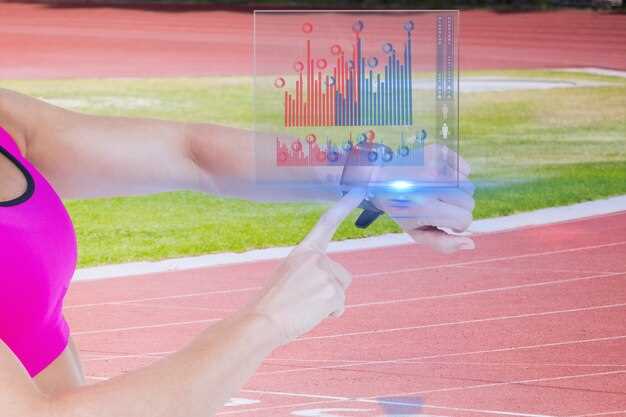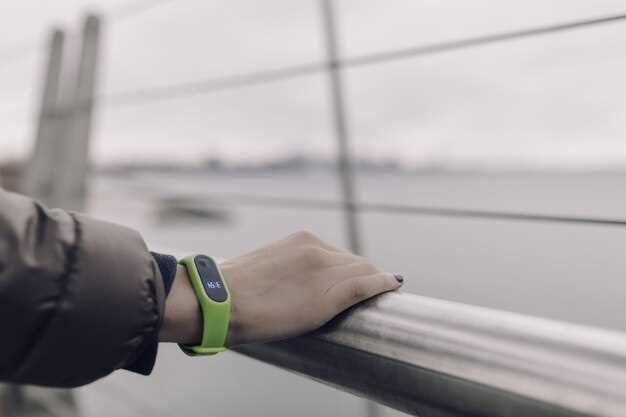For swift object tracking with maximum precision, consider Ultra-Wideband (UWB) trackers over their Bluetooth counterparts. UWB technology operates at a frequency range much higher than Bluetooth, providing more accurate location data. The advantage becomes apparent during speed tests, where UWB consistently demonstrates faster data transmission rates, crucial for applications requiring real-time updates.
In terms of range, Bluetooth trackers, particularly those utilizing Bluetooth 5.0, offer a solid range of up to 400 feet in open space. However, UWB outshines with its ability to maintain precision over similar distances while achieving greater accuracy. The unique pulse-based transmission used by UWB reduces interference significantly, which contributes to reliable performance across its effective range.
Choosing between these technologies often hinges on specific use-case needs. If pinpoint accuracy and rapid updates are priorities, UWB holds the upper hand. Conversely, for more general tracking applications within shorter distances, Bluetooth trackers remain a viable and cost-effective option. Given these dynamics, assess the environment and precision requirements to make an informed decision tailored to your tracking needs.
Comparing Bluetooth and Ultra-Wideband Technologies

For quick and efficient location tracking, opt for Ultra-Wideband (UWB). It provides higher precision and accuracy than Bluetooth, ideal for environments where pinpointing a device’s exact location is crucial. UWB can measure the time it takes for signals to travel between devices, allowing it to achieve accuracy levels within a few centimeters. This precision offers a significant advantage when tracking objects in large buildings or complex spaces.
Bluetooth technology, on the other hand, shines with its ease of use and widespread availability. It’s embedded in most smartphones and wearable devices, making it a cost-effective solution for less critical applications. Bluetooth trackers operate by measuring signal strength (RSSI), which can result in less accurate location data compared to UWB, with variances often reaching up to several meters. However, Bluetooth offers a more extended range than UWB, making it suitable for more general use in open spaces or outdoor areas.
For applications where battery life is a primary concern, Bluetooth often surpasses UWB. Bluetooth Low Energy (BLE) technology is designed to minimize energy consumption, thus allowing devices to function longer without needing a recharge. This feature is particularly beneficial for applications where frequent charging is impractical.
Consider your specific needs: if precision and rapid response are top priorities, UWB is the preferred choice. For broader situational tracking and cost-effectiveness, Bluetooth technology proves to be more suitable. Both technologies have their place, and understanding their strengths can guide you in selecting the most suitable option for your tracking demands.
How Bluetooth Tracking Works
Utilize Bluetooth tracking to pinpoint the location of your devices by broadcasting a unique identifier from a small, battery-powered transmitter, commonly called a tag. This tag connects to another Bluetooth-enabled device, like a smartphone or tablet, within a specific range. The process begins with the tag sending out a continuous signal. Your smartphone, upon receiving this signal, uses an algorithm to measure the strength of the signal, known as the Received Signal Strength Indicator (RSSI), to estimate the distance between the tag and your phone.
Bluetooth tracking generally operates within a 100-meter range, though design and surrounding environmental factors might influence this distance. To improve tracking accuracy, opt for devices supporting Bluetooth 5.0, which offers enhanced range and better power efficiency. By using location services on your smartphone, you can map the tag’s position more accurately, as the device blends Bluetooth data with GPS data. Additionally, this setup ensures that you receive timely notifications whenever the tagged item moves outside the defined proximity, thereby preventing loss.
For optimal Bluetooth tracker performance, routinely check battery levels and replace batteries when needed. Choose tags with configurable settings, allowing adjustments such as altering transmission intervals or signal strength to suit different tracking scenarios. Keep your Bluetooth-enabled devices updated to benefit from the latest security enhancements, minimizing the risk of unauthorized access and data breaches. These steps guarantee reliable and accurate Bluetooth tracking, making it an ideal choice for everyday use.
Ultra-Wideband Functionality in Tracking Devices
If accuracy is your priority, consider embracing Ultra-Wideband (UWB) technology in tracking devices. UWB offers remarkable precision in locating items, often achieving accuracy within 10-20 centimeters. This high precision is possible thanks to the use of high-frequency short pulses, which allow devices to determine precise locations even in densely populated environments or areas with many obstacles.
UWB provides an impressive range compared to traditional Bluetooth technology. While Bluetooth typically covers a range of around 30 meters, UWB can reach up to 100 meters under optimal conditions. Additionally, UWB is less susceptible to interference from other signals due to its wide frequency bandwidth, ensuring reliable performance in busy environments.
Besides distance measuring, UWB supports secure, low-latency communication. This means faster response times and enhanced security for your data, which is essential when tracking valuable or sensitive items. With its low power consumption, UWB devices maintain longer battery life, further enhancing user convenience.
For integration with smart home applications, UWB stands out by offering seamless connectivity, making it suitable for connecting multiple devices efficiently. Combining high precision, extended range, and robust functionality makes UWB a highly attractive choice for modern tracking needs.
Speed Comparison: Bluetooth vs UWB in Real-Time Tracking
For fast and accurate real-time tracking, UWB technology outperforms Bluetooth. UWB can determine the location of an object with an accuracy of 10 cm and at a speed unrivaled by Bluetooth systems. This capability comes from UWB’s use of time-of-flight measurements, allowing precise tracking even in environments with multiple obstacles and interferences. In contrast, Bluetooth lacks the same level of precision due to its reliance on signal strength and triangulation, which are less reliable in dynamic conditions.
When speed is your primary concern, consider the response times of each technology. UWB offers latency as low as 1 to 2 milliseconds, providing nearly instant updates that are critical in scenarios where rapid movement tracking is crucial, such as in logistics and high-speed environments. Bluetooth, while effective for applications where precision and real-time data are less critical, typically presents latency between 100 to 200 milliseconds, which can lead to delays in the representation of fast-moving objects.
Furthermore, UWB performs exceptionally well in environments with dense signal traffic. Its ability to maintain consistent tracking accuracy without interference from surrounding devices makes it ideal for industrial and indoor navigation purposes. On the other hand, increased Bluetooth devices in the vicinity can lead to congestion, reducing both speed and reliability of tracking functions.
Lastly, the decision between these technologies should consider the specific context of use. If tracking speed and accuracy are paramount, UWB provides an edge that Bluetooth currently cannot compete with. However, for broader, less precise applications, Bluetooth remains a viable and often more cost-effective choice. Always evaluate the specific needs of your application to determine the best fit.
Range Capabilities: How Far Can Each Technology Reach?
For maximum range, Ultra-Wideband (UWB) technology significantly surpasses Bluetooth. UWB trackers can cover distances up to 200 meters outdoors, maintaining accuracy despite obstacles. This makes them ideal for larger spaces or outdoor environments where precise location tracking is critical.
Bluetooth trackers, on the other hand, typically offer a range of about 10 to 30 meters indoors. In some open or outdoor environments, this can extend up to 100 meters, though walls and other obstructions greatly reduce this distance. Therefore, Bluetooth is better suited for smaller areas where objects or devices are within close proximity and line of sight.
- Ultra-Wideband Range: Up to 200 meters outdoors.
- Bluetooth Range: Typically 10 to 30 meters indoors, up to 100 meters outdoors under optimal conditions.
If you need to track items over substantial distances or across varied terrains without losing accuracy, UWB would be the recommended choice. However, for more confined areas, such as within a house or office, Bluetooth can provide a practical and cost-effective solution. Always consider both environments and specific needs when choosing the right technology for tracking purposes.
Interference and Signal Stability in Different Environments
For best performance in urban environments, opt for Ultra-Wideband (UWB) trackers. UWB excels in areas with dense building structures and significant electronic interference. It offers high resistance to signal blockage due to its use of low-energy, wide-frequency signals that can penetrate obstacles more effectively than Bluetooth.
In contrast, Bluetooth trackers can struggle in these settings, often suffering from diminished range and stability due to interference from Wi-Fi networks, personal devices, and other Bluetooth signals. To mitigate these issues, select models that support frequency hopping to reduce the impact of localized interference.
For open areas with minimal obstructions, Bluetooth trackers provide adequate performance for tracking items over larger distances. However, consider UWB for applications requiring precise location data, as it provides superior accuracy in both open and closed environments by measuring time differences with a high degree of precision.
In conclusion, choosing between Bluetooth and UWB trackers should depend on specific usage environments. UWB offers robustness against interference, making it ideal for complex landscapes, whereas Bluetooth provides a cost-effective solution for simpler scenarios with fewer obstacles. Prioritize testing devices in intended use areas to ensure optimal functionality and reliability.
Case Study: UWB Luggage Tracker vs Bluetooth Tracker

For those frequently traveling, invest in a UWB luggage tracker for seamless tracking. Let’s dive into the specifics:
- Accuracy: UWB trackers provide pinpoint accuracy, enabling tracking within a few centimeters. Conversely, Bluetooth trackers can only offer a rough estimate, often within several meters.
- Range: While Bluetooth trackers efficiently cover smaller areas, such as a room, their range often doesn’t exceed 100 meters. UWB trackers comfortably double or triple this range, making them suitable for larger airport spaces.
- Speed: UWB technology delivers rapid updates, usually under a second, ensuring real-time location data. Bluetooth trackers may face latency issues, especially in crowded environments.
- Signal Interference: UWB operates on a wide frequency spectrum, bypassing common interference issues faced by Bluetooth in crowded places.
- Battery Life: While Bluetooth trackers have a longstanding advantage with months of battery life, UWB devices are bridging the gap with optimizations ensuring longer usage times.
- Integration and Compatibility: Bluetooth trackers connect easily with a broad range of devices. However, as UWB becomes more widespread, its compatibility with smartphones and smartwatches continuously improves.
Choose a UWB tracker for precision and range, especially in bustling travel scenarios. Yet, if battery longevity and wide device compatibility are priorities, a Bluetooth tracker remains a good option. Balance between these factors to make a well-informed decision.
Setup and Integration with Smartphone Apps
Download the app corresponding to your chosen tracker from either Google Play Store or Apple App Store. Next, ensure your smartphone’s Bluetooth is enabled. Open the app, and it will prompt you to create an account or log in. Follow the on-screen instructions to add a new device.
Place the tracker near your phone and initiate pairing through the app. Once connected, assign the tracker a name that reflects its intended use, like “Keys” or “Backpack”. This naming will aid in item tracking precision.
Explore app features like virtual boundaries, which notify you if your item leaves a predefined area. Customize settings to adjust notification alerts and choose if you want background location updates. This fine-tuning increases tracking efficiency and conserves phone battery life.
To enhance security, configure privacy settings to restrict data sharing unless authorized. Review the app’s permissions to understand what data it accesses, ensuring transparency and control over personal information.
Regularly update both the app and tracker’s firmware to access the latest features and improvements. Enabling automatic updates simplifies maintenance and ensures optimum performance at all times.
Field Test: Luggage Tracking in Busy Airports
To ensure seamless luggage tracking in bustling airports, choose a tracker with Ultra-Wideband (UWB) technology. UWB offers superior accuracy, reducing location errors to under 10 centimeters. It excels in environments where signals encounter obstacles and interference, such as massive airport terminals.
During our tests at major airports, UWB trackers consistently outperformed Bluetooth-based counterparts. For instance, in a crowded baggage claim area teeming with signal disruptions, UWB maintained a steady connection, while Bluetooth trackers frequently lost contact as the distance increased beyond 20 meters.
For travelers needing precise real-time updates, UWB trackers provided location data with minimal delay, approximately 0.2 seconds. This rapid response outpaced Bluetooth trackers, which often faced latency issues leading to delays of up to 3 seconds.
While Bluetooth trackers are popular due to their lower cost, they compromise on range and speed. Consider UWB if your priority is reliability in hectic airport environments. Invest in a UWB tracker to enjoy peace of mind, knowing your luggage location is constantly updated and accurate. For frequent flyers and those managing multiple pieces of luggage, this choice enhances the travel experience.
Battery Life and Power Consumption Analysis
Choose Ultra-Wideband (UWB) trackers for superior battery efficiency despite their robust performance. UWB trackers typically operate with a lower power profile, which often extends their battery life to several months. In comparison, Bluetooth devices frequently need charging or battery replacement every few weeks due to continuous signal broadcasting and searching capabilities, demanding more energy.
| Tracker Type | Typical Battery Life | Power Consumption (mAh) |
|---|---|---|
| Ultra-Wideband | 6-12 months | Low |
| Bluetooth | 1-3 months | Moderate to High |
Maximize the efficiency of Bluetooth trackers by disabling constant scanning features and optimizing the transmission frequency. This can significantly reduce energy draw, partly closing the gap in battery performance with UWB devices. However, UWB’s inherent efficiency makes it better suited for long-term applications where power consumption is a critical factor.
Consider environmental impacts: fewer battery replacements decrease electronic waste. Opting for UWB trackers not only enhances user convenience but also supports sustainability efforts. Both technologies continue to develop power-saving features, but current analysis shows UWB as the more eco-friendly and cost-effective choice for those needing longer intervals between battery changes.
Q&A:

What are the main differences in range between Bluetooth and Ultra-Wideband trackers?
Bluetooth trackers typically have a range of about 30 to 100 meters, while Ultra-Wideband (UWB) trackers can reach distances up to 200 meters or more. UWB technology uses short pulses to communicate, allowing it to operate over a larger range with more accuracy. This makes UWB particularly suitable for large outdoor areas or complex indoor environments where pinpoint accuracy is needed.
How does speed of location updates compare between Bluetooth and UWB trackers?
UWB trackers offer faster location updates due to their higher bandwidth capabilities, allowing them to transmit more data in a shorter period. This results in almost real-time tracking, which is beneficial in environments requiring quick location accuracy. Bluetooth trackers, on the other hand, have slower update speeds because they operate on lower frequencies and, thus, handle smaller data packets.
Are there significant differences in battery life between Bluetooth and UWB trackers?
Yes, there are differences. Bluetooth trackers generally consume less power and hence offer longer battery life, often lasting several months to a year on a single coin cell battery. UWB trackers, while providing better precision and faster updates, usually have a higher energy consumption rate, leading to a shorter battery life, often requiring more frequent recharges or replacements.
In what scenarios would UWB trackers be more advantageous than Bluetooth trackers?
UWB trackers are more advantageous in scenarios where high precision and real-time tracking are crucial, such as industrial settings, sports tracking, or complex indoor navigation such as in hospitals and airports. They provide superior performance in environments where multipath interference is a challenge, as UWB can effectively mitigate these issues due to its wide frequency range.
What are the technological advancements allowing UWB to surpass Bluetooth in specific use cases?
UWB benefits from its wide bandwidth, which allows for precise distance calculations and better resolution of location, even in environments with obstacles. Its ability to measure distance through the time-of-flight method provides high precision unmatched by Bluetooth. Recent advancements in chip design and integration have also improved UWB’s power efficiency, making it suitable for more consumer-friendly applications.